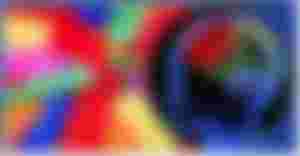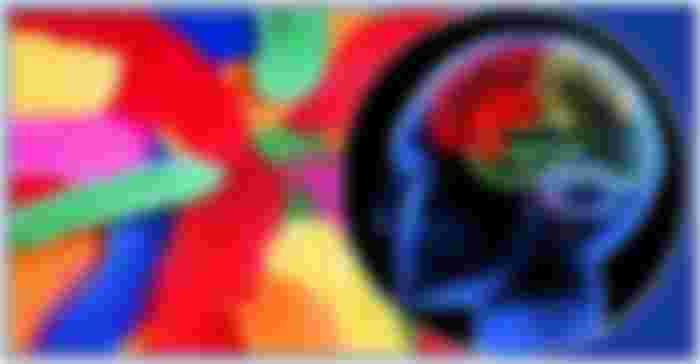
Body and mind are our whole being. A beautiful mind without a healthy body, a healthy body without a healthy mind is not possible. Different types of physical conditions affect such as mental health; Similarly, various mental instability also affects physical well-being. Mental exhaustion, depression, frustration, etc. seem to be a constant companion in modern mechanical life. As much as we are concerned with physical well-being; Just as indifferent to mental well-being. Mental health is no less important than physical health. A combination of physical and mental health is essential for a healthy life. Overall well-being can never be achieved by neglecting one.
Multiple studies and experiments on the effects of color on mood have been going on for a long time. Since ancient times people have been using different colors as communication and different types of signals. As some studies have shown, color is capable of causing dramatic changes in mood. As well as color, it brings huge changes in people's emotions, feelings, decisions and perceptions. There are even some dyes, which also play a role in increasing blood pressure and physiological metabolism. According to the famous painter Pablo Picasso, the characteristic of color is to follow the change of emotion. Feelings about color are often personal and involve their own experience or culture. For example, the use of white is the most common color in the world in western countries. Westerners believe, it represents their purity and simplicity. But in Eastern countries, white was once considered a symbol of mourning.
Chromotherapy is a method of applying alternative medicine. Where different colors of light are applied to balance the work force of the individual without judging the nature of the problem and to improve the physical condition by controlling the emotional sensitivity. However, according to some critics, it is pseudoscientific. Because chromotherapy is a special kind of practical knowledge in a combination of psychology, art, physics and medicine. Color therapy, chromotherapy, chromotherapy, color light therapy, etc. are all synonymous.
The Hindu philosopher Abhisena was the first to realize the significance of color in good health. He mentioned chromotherapy in his book, The Canon of Medicine. According to his description, color is a symbol of chemical energy in high-velocity vibrations. So knowing which color will be more effective for different people, it is possible to balance a few chemical reactions. Later, neuropsychiatrist and acupuncturist Dr. The matter of chromotherapy is further developed by Christian Agrapart. According to the principles of chromotherapy, different colors can bring us exceptional stimulation. For example, the correction of a certain mental state, which affects the overall balance of the person. Colors can calm the mood. It can even increase a variety of vital energy and cure a number of ailments.
Scientist Sir Isaac Newton showed in an experiment in 18 that when white light passes through a transparent object shaped like a prism, it splits into seven colors. Then he sees that each color has a different wavelength. Later it was proved through some more experiments that two or more different colored lights could be combined to form another completely different colored light. For example, combining red light and yellow light results in orange light. When green and magenta are combined again, they reject each other and turn into white light. Basically the subjects are used more in drawing. Although perceptions of color are somewhat thematic, there are some colors. Which has a definite universal meaning.
The colors of the red region of the light spectrum are known as warm colors and include red, orange and yellow. Colors range from feelings of warmth, excitement, love, passion and comfort to anger and hostility. The color red stimulates our nerves and the use of red for attention has been noticed for a long time. The colors included in the blue part of the spectrum are blue, pink and green. Those are considered cool colors. The colors can give the impression of serenity as well as indifference. Some also consider blue as a symbol of fidelity and peace and green as a symbol of softness and serenity. In addition, as a sensitive color, a wonderful combination of love and emotion can be found in pink. And white is considered a symbol of purity, neutrality, simplicity and emptiness. Where fear, anxiety, grief, death, grief or mystery are found in the midst of blackness.
The use of color as therapy uses three primary colors and eight colors derived from their various combinations. Some even add pink, magenta or blue to the list. Chromotherapists use different colored light lamps or flashlights as acupuncture or chromopuncture mode or slides are applied directly to the patient's body. The duration of this application is usually between ten to thirty minutes. It takes two to three weeks to get the full results of chromotherapy. Several ancient cultures, including the Egyptians and Chinese, practiced the use of dyes for chromotherapy.
Since red transmits energy and vigor, red chromotherapy is recommended for apathy, physical relaxation and even for colds. Red has also been shown to be effective during athletic activities. However, in excessive application, it can cause irritation, aggression and fatigue. Yellow is an effective antidepressant as a therapy that provides clarity, joy, stimulation and excitement. It is also recommended for digestive disorders. However, over-application can be annoying. Orange is used to heal the lungs and increase energy levels.
There is also no pair of orange chromotherapy to control hyperthyroidism and repair tissues. However, excessive application can cause nervousness and instability. Neel is believed to be effective in relieving illness, curbing crime and relieving pain. Besides, blue chromotherapy also plays a role in relieving insomnia, mental fatigue, stress, high blood pressure, acute pain, fever etc. In addition, light blue is believed to reduce skin problems and blue, combined with green, also helps to awaken insight and talent. Green chromotherapy stimulates cell growth and erosion. In addition, green light acts as a tonic and balances the nervous and circulatory systems. However, its excessive application can lead to weakness or frustration.
The limitations of chromotherapy are that it is not scientifically recognized by the World Health Organization, the CDC, the Royal College, the Society of Medicine, or the DGHS. In addition, peer-reviewed scientific journals also failed to demonstrate the effectiveness of any scientific evidence or publication. It is an alternative medicine that is used instead of allopathic medicine. However, psychologists are continuing to study the subject for better review.
